Losing a tooth can significantly impact your oral health, appearance, and overall well-being. Fortunately, dental implants offer a long-term, durable, and aesthetically pleasing solution for replacing missing teeth. However, the process of getting a tooth implant isn’t a quick fix. It involves multiple stages, and the total time it takes can vary depending on several factors. This article will explore the comprehensive timeline involved in obtaining a tooth implant, addressing the question: how long does it take for a tooth implant?
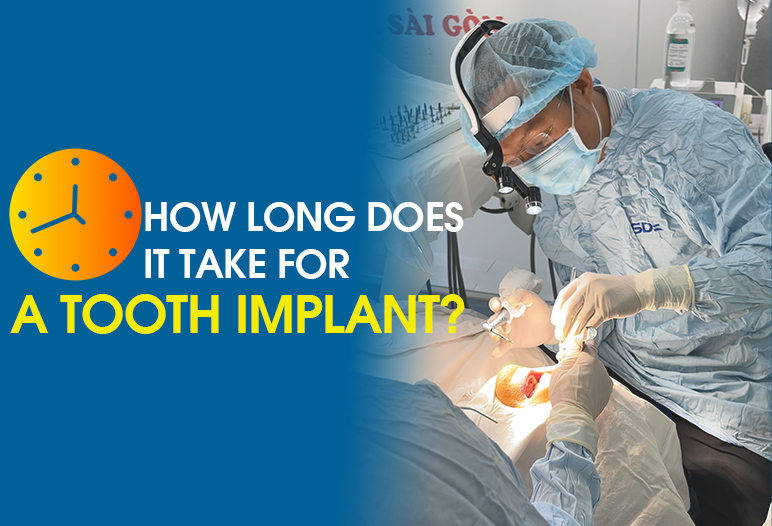
How long does it take for a tooth implant?
Dental implants are the process of placing a titanium implant post into the jawbone. This implant post replaces the lost natural tooth root and supports the dental crown above. How long does a dental implant take? In reality, the surgical placement of the implant post is very quick, taking only 30 minutes per tooth or about 1-2 hours for full-arch implants. However, the question of how long does a tooth implant procedure take encompasses much more time, as the dental implant timeline includes multiple stages:
- Consultation and Health Check-Up: Assessing oral health and overall medical condition.
- Surgical Placement of the Implant Post: Placing the implant securely into the jawbone.
- Healing and Integration Period: Allowing the implant to integrate with the jawbone.
- Impression for Temporary Crowns: Taking impressions to create temporary teeth on the implant.
- Follow-Up Visits: Regular check-ups to monitor healing and prevent complications.
- Final Crown Restoration: Completing the procedure by attaching the permanent dental crown.
The total duration depends on individual conditions, the complexity of the case, and the number of implants required. While the surgical step is fast, the complete process ensures a durable and high-quality restoration.
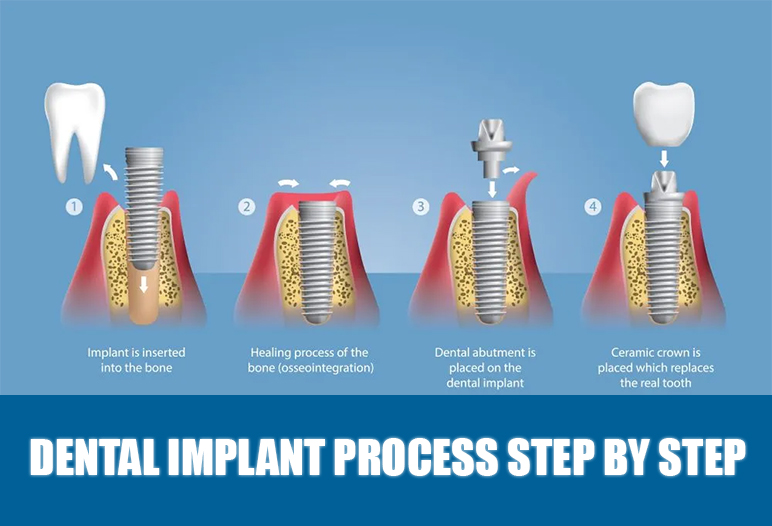
The tooth implant process overview
Understanding the tooth implant process, and how long do dental implants take is essential for those considering this restorative procedure. The journey from initial consultation to final restoration involves several critical stages that contribute to the overall success of the treatment. Each stage is essential in ensuring that the implant integrates properly with the jaw and functions effectively as a replacement for the natural tooth.
Initial consultation and assessment
The first step in the tooth implant process occurs during the initial consultation and assessment with a qualified dental professional. This appointment is vital as it sets the foundation for the entire procedure.
During this visit, the dentist or oral surgeon will carry out a thorough examination of your oral health. This includes assessing your existing dental condition, evaluating gum health, and analyzing the structure of your jawbone.
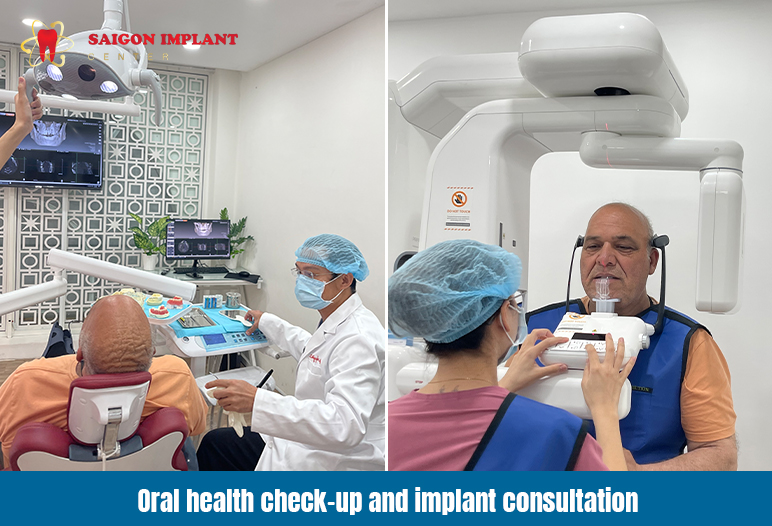
Medical history is also an essential component of this evaluation. The dentist will inquire about any underlying health issues, medications you may be taking, and lifestyle choices such as smoking or alcohol consumption. These factors can significantly influence the healing process post-surgery.
To accurately diagnose your requirements, various diagnostic tools are employed. X-rays and 3D scans (like Cone Beam Computed Tomography) provide detailed images of your mouth, allowing the dentist to plan the procedure with precision. The insights gained from these assessments help in formulating a personalized treatment plan tailored to your unique needs.
Treatment planning and preparation
Following the initial consultation, the next phase in the process is treatment planning and preparation. Here, the dentist outlines the necessary steps involved in the implantation procedure, addressing any preparatory needs that may arise before surgery.
One common preparatory step is bone grafting. If your jawbone lacks sufficient density to support the dental implant, a bone graft might be essential. Bone grafting strengthens the jaw by adding material to the area, allowing it to fuse with the existing bone over time. This procedure alone can prolong the overall timeline for receiving your implant, often extending the duration to several months.
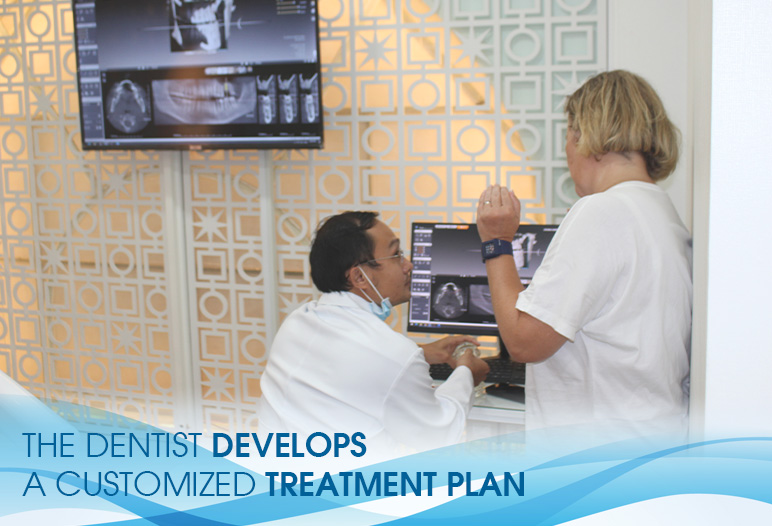
Another potential preparation step could involve gum tissue grafting. This is necessary if the gums surrounding the missing tooth are unhealthy or insufficient. Improving gum health through grafting creates a conducive environment for successful implant placement.
For individuals with adjacent damaged teeth, extraction may be required before moving forward with the implant procedure. Dental hygiene improvements are also crucial, especially for patients with existing gum disease. Addressing these concerns early reduces the risk of complications later on.
Surgical procedure for implant placement
After completing all preparatory steps, the surgical procedure for implant placement can be scheduled. This marked moment is when the titanium implant fixture is surgically inserted into the jawbone at the location of the missing tooth.
The surgery typically takes place under local anesthesia, although general anesthesia may be applied based on the complexity of the case or patient preference.
During the surgery, the dentist begins by making a small incision in the gum tissue to reveal the jawbone. A specialized drill is then used to create a precise hole in the bone—where the titanium implant will ultimately reside.
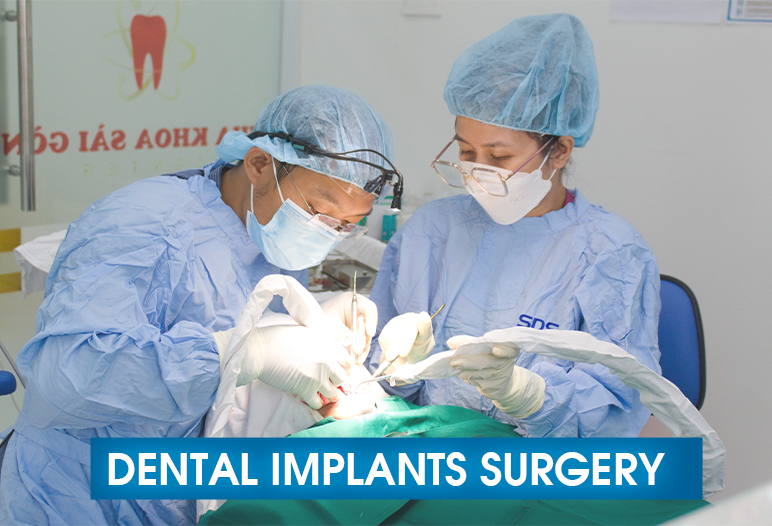
Once the implant is securely placed in the prepared hole, the gum tissue is sutured closed. A temporary protective cap may be fitted above the implant to safeguard it while healing occurs. On average, the surgical procedure takes approximately 30-60 minutes, although this can vary based on individual circumstances.
How long does a dental implant take overall, will depend on the complexity of the case, the number of implants, and the patient’s healing process. Post-surgery, normal side effects include swelling, bruising, and discomfort, which should subside within a few days.
Factors influencing the duration of tooth implants
Multiple factors determine the overall duration it takes to complete the dental implant timline. These factors vary from individual patient health considerations to specific characteristics of the chosen implant.
Individual health considerations
A patient’s overall health is one of the most significant influences on the duration of the tooth implant process. Individuals with pre-existing medical conditions, such as diabetes or autoimmune disorders, may encounter slower healing times due to their body’s compromised ability to recover.
Moreover, lifestyle choices like smoking and excessive alcohol consumption can impede the healing process. Nicotine negatively affects blood circulation, which is vital for recovery after implant surgery. Therefore, patients are strongly encouraged to quit smoking well in advance of the procedure.
Finally, age plays a role in healing rates—older adults may experience longer recovery times compared to younger individuals. Thus, understanding your health profile is critical as it can affect both the time it takes to get a dental implant and the success of the implant itself.
Type of implant used
The type of dental implant selected can also significantly influence how long the entire process will take. Different types of implants come with varying characteristics and timelines for integration with the jawbone.
Traditional implants tend to require a more extended period to fuse with the bone compared to mini-implants. Mini-implants, being smaller in size, can sometimes be placed in areas where traditional implants may not be suitable, and their healing time can be shorter.
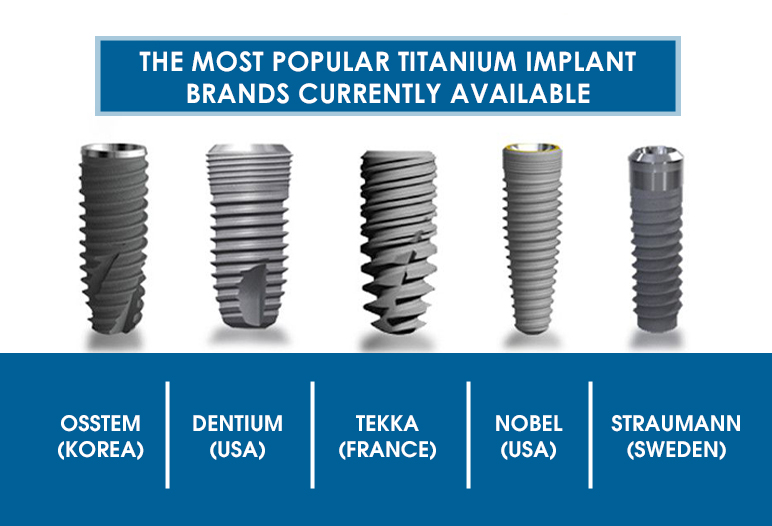
Additionally, certain advances in dental technology have led to the development of faster-healing implant systems, which may also reduce the overall duration of the process. Patients should consult their dentists about the various options available, including the pros and cons associated with each type.
Bone density and jaw structure
Bone quality is another critical factor affecting the timeline for tooth implants. The density and strength of the jawbone play a pivotal role in the osseointegration process—the method by which the implant fuses with the surrounding bone.
Individuals with healthy, dense jawbones generally experience a faster osseointegration process than those with thinner or weaker bone structures. This can significantly extend the timeframe for patients requiring bone graft and implant procedures. Bone grafting is often necessary to enhance the jawbone’s quality and quantity, providing a stable foundation for the implant. However, the grafted bone requires time to integrate fully with the existing bone before proceeding to implant placement, which can add several months to the treatment process. The dental bone graft cost starts at $200 and can increase depending on the extent of bone loss in the patient.
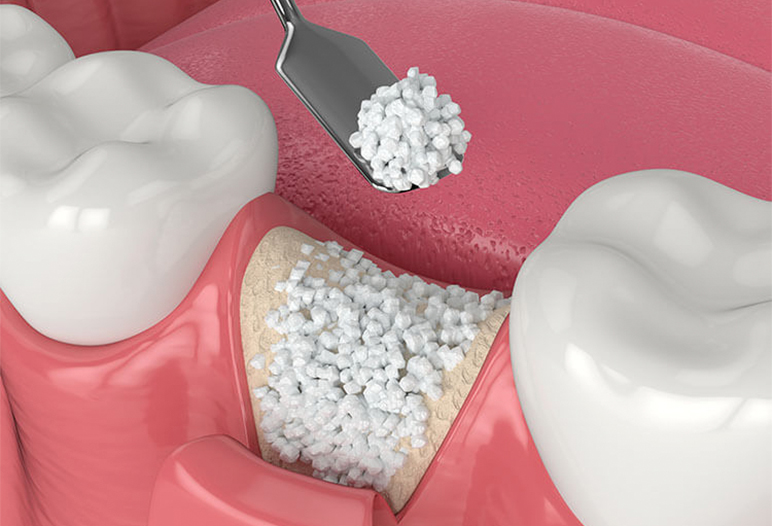
Additionally, patients’ anatomical differences can also impact the dental implant timeline. Some individuals may have unique jaw structures that necessitate additional surgical techniques or modifications in implant placement, potentially leading to a delayed process. By addressing these challenges with advanced planning and techniques, dental professionals can optimize treatment outcomes while ensuring long-term success.
Stages of healing after implant surgery
Post-surgery, the healing process is paramount in determining the long-term success of the dental implant. This phase unfolds in distinct stages, each contributing to the stability and functionality of the implant.
Osseointegration phase
The osseointegration phase is arguably the most crucial part of the healing process. During this phase, the titanium implant gradually fuses with the surrounding bone, anchoring it securely in place. This biological bonding is instrumental for the long-term stability of the implant.
Typically, osseointegration takes several months, ranging from 3-6 months. However, some patients with slower healing capabilities may find this phase extends even longer. Factors such as individual health conditions, lifestyle habits, and the quality of the jawbone can influence the timing of this phase.
Patients should also understand that the osseointegration phase is largely dependent on their body’s ability to heal. Adequate nutrition, hydration, and avoidance of harmful habits like smoking can promote optimal healing during this time.
Temporary restorations during healing
While waiting for the osseointegration phase to be completed, many patients opt for a temporary restoration. This interim solution serves multiple purposes: protecting the implant site, maintaining aesthetics, and enabling comfort during the healing stage.
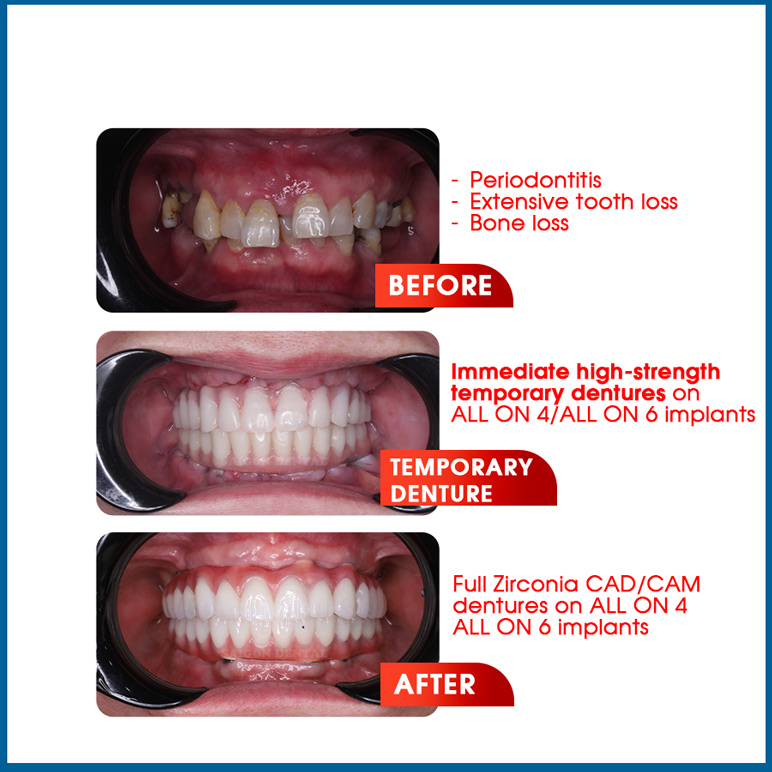
Temporary restorations can take the form of simple acrylic dentures or temporary crowns. These temporary devices allow patients to continue eating and smiling confidently while their permanent solutions are being prepared.
It’s important to note that temporary restorations need careful maintenance, and patients should follow their dentist’s instructions to ensure they remain clean and functional throughout the healing period.
Final restoration process
Once osseointegration has successfully occurred, the final restoration takes place. This aspect of the process involves attaching an abutment—a small connector—to the implant fixture. The abutment acts as a platform for the final crown or denture.
Creating the custom-designed crown or denture is a meticulous process, aimed at ensuring that the final restoration matches the color, shape, and function of the patient’s natural teeth. This stage often requires several appointments for creating impressions, fitting and making any necessary adjustments.
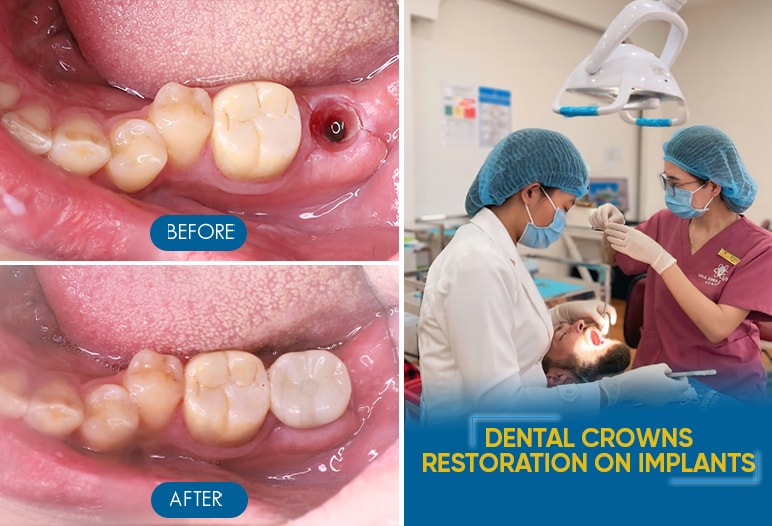
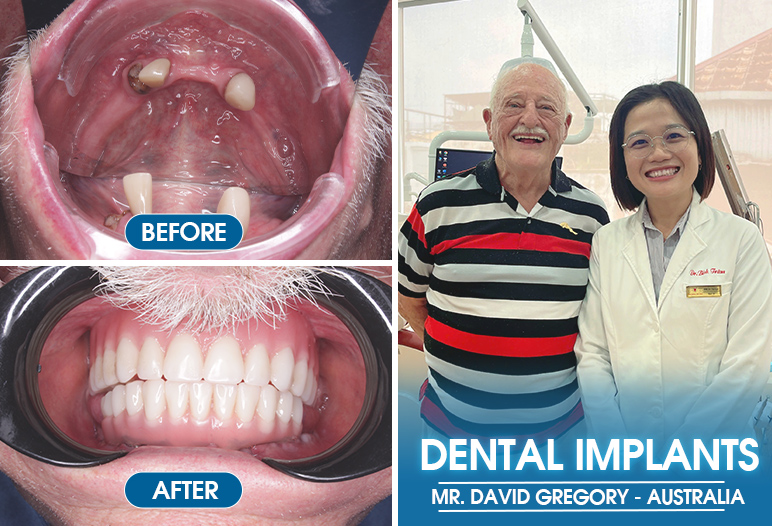
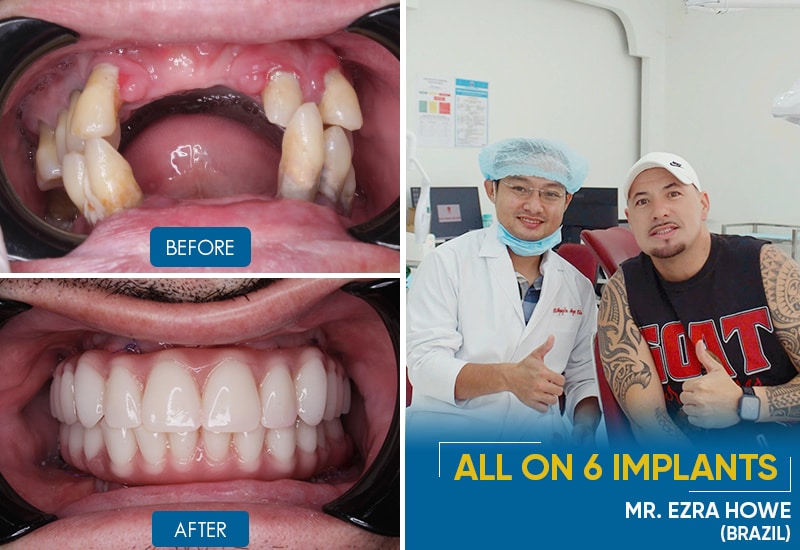
While exciting, the final restoration marks the concluding chapter in the journey towards achieving a functional and aesthetically pleasing smile. Upon completion, patients can enjoy their newly restored tooth and the confidence that comes along with it.
Potential complications and delays
Although tooth implants are known for their high success rate, potential complications and delays can occur. Being aware of these possibilities allows patients to manage expectations and adequately prepare for unforeseen circumstances.
Infection risks and management
Infection represents a significant risk following any surgical procedure, including implant surgery. Maintaining good oral hygiene and adhering strictly to post-operative care instructions can mitigate this risk substantially.
Signs of infection, such as increased pain, swelling, or fever, should never be ignored. Promptly addressing any signs of infection with your dentist is crucial for preventing complications that could delay the healing timeline or necessitate further interventions.
If an infection does arise, treatments may include antibiotics or additional surgical procedures. By prioritizing aftercare and monitoring your oral health closely, you can minimize the chance of infection impacting the overall timeline.
Need for additional procedures
Certain unforeseen circumstances may arise that require additional procedures, significantly impacting the overall timeline for completing the implant process. For instance, if the bone density is inadequate, bone grafting may become necessary, extending the time needed before the implant can be positioned.
In some cases, if the implant fails to integrate with the bone during the osseointegration phase, it may need to be removed and replaced. This scenario can lead to delays that stretch the entire process beyond expectations. Understanding that such complications can occur helps patients remain resilient in navigating the journey toward restoring their smiles.
Patient compliance and healing variability
Patient compliance with post-operative instructions is paramount for achieving optimal healing. Adhering to recommendations regarding diet, oral hygiene, and follow-up visits significantly impacts the success of the implant.
Healing variability can differ greatly from person to person. While some may experience swift recovery and minimal complications, others might encounter unexpected hurdles. Natural biological variations should be acknowledged, and patience is vital as healing progresses at its own pace.
Furthermore, maintaining open communication with your dental team can facilitate timely adjustments to the treatment plan, ensuring that any delays or complications are addressed promptly.
Tips for a faster recovery
Although the healing process is predominantly governed by biological factors, patients can adopt certain practices to support optimal healing and possibly expedite recovery.
Pre-operative preparations
Good oral hygiene is essential before undergoing surgery. Engaging in diligent brushing, flossing, and regular dental visits helps minimize the risk of infections post-surgery.
Quitting smoking is another critical step; nicotine can severely impair healing. Patients are advised to stop smoking well in advance of surgery.
Additionally, managing pre-existing medical conditions can pave the way for a smoother recovery. Collaborating with healthcare providers for proper management ensures that any underlying issues are addressed ahead of the procedure.
Post-surgery care practices
Following the dentist’s post-operative instructions is paramount for promoting proper healing. This includes taking prescribed medications, sticking to a soft-food diet, and practicing good oral hygiene without disturbing the surgical site.
Managing pain and discomfort is essential. Using over-the-counter pain relievers or prescribed medications can help alleviate postoperative discomfort, contributing to a more manageable recovery period.
Applying ice packs to the affected area post-surgery can reduce swelling and discomfort, fostering a more comfortable healing experience.
Regular Follow-up appointments
Attending regular follow-up appointments with your dentist is essential for monitoring healing and identifying any potential complications early. These check-ups allow your dental team to assess the integration of the implant and ensure everything is on track for a successful outcome.
Being proactive in scheduling and attending these appointments can enhance the likelihood of a smooth recovery and timely completion of the implant process.
Conclusion
Navigating the journey to obtaining a tooth implant can be a multi-faceted process, with various stages and factors influencing the timeline. Understanding the question of how long does it take for a tooth implant is fundamental for patients considering this restorative solution.
From the initial consultation and treatment planning to the surgical procedure and healing phases, every aspect contributes to the overall success of the implant. Factors such as individual health, bone density, and the type of implant used play crucial roles in shaping the duration of the process.
By remaining informed and engaged throughout this journey, patients can cultivate realistic expectations and maximize their chances of a successful outcome. With the right preparations, adherence to post-operative care, and collaboration with dental professionals, achieving a beautiful, functional smile through dental implants is within reach.

 Google Reviews
Google Reviews Call
Call
SAIGON IMPLANT CENTER
Best dentist in Vietnam
Saigon Implant Center - Dental Clinic utilizes the latest technology for specialized treatment in the field of Single implant, full jaw implants, All on 4 implants, All on 6 implants, Zygoma implant....
SAIGON IMPLANT CENTER
Best dentist in Vietnam
Saigon Implant Center - Dental Clinic utilizes the latest technology for specialized treatment in the field of Single implant, full jaw implants, All on 4 implants, All on 6 implants, Zygoma implant....